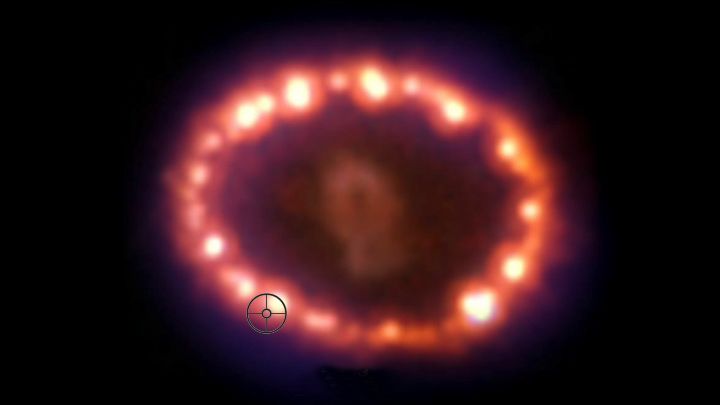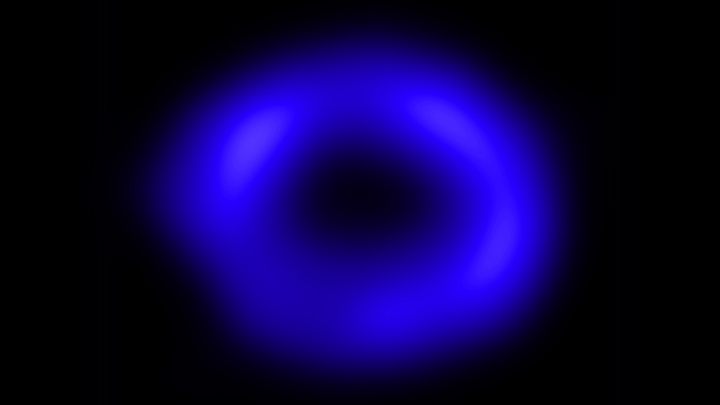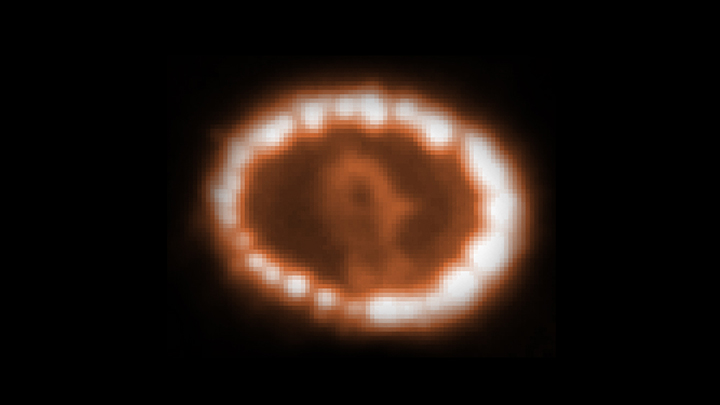
SN87A Sonification
On February 24, 1987, observers in the southern hemisphere saw a new object in the Large Magellanic Cloud, a small satellite galaxy to the Milky Way. This was one of the brightest supernova explosions in centuries and soon became known as Supernova 1987A (SN 87A). This time lapse shows a series of Chandra (blue) and Hubble (orange and red) observations taken between 1999 and 2013. This shows a dense ring of gas, which was ejected by the star before it went supernova, begins to glow brighter as the supernova shockwave passes through. As the focus sweeps around the image, the data are converted into the sound of a crystal singing bowl, with brighter light being heard as higher and louder notes. The optical data are converted to a higher range of notes than the X-ray data so both wavelengths of light can be heard simultaneously. An interactive version lets the user play this astronomical instrument for themselves.
Access more information & file formats on this sonification
Visit the SN 1987A interactive sonification
The Chandra sonifications were led by the Chandra X-ray Center (CXC), with input from NASA's Universe of Learning. The sustained collaboration was driven by visualization scientist Dr. Kimberly Arcand (CXC), astrophysicist Dr. Matt Russo and musician Andrew Santaguida (both of the SYSTEM Sounds project). For other sonifications, please see their linked pages.
cxcpub@cfa.harvard.edu
617-496-7941
60 Garden Street,
Cambridge, MA 02138 USA
Art Direction/Design: Kristin DiVona
Web Developers: Khajag Mgrdichian
& Kelly T.S. Williamson
Chandra X-ray Center, Operated for NASA by the Smithsonian Astrophysical Observatory. This site was developed with funding from NASA under contract NAS8-03060 | Privacy | Accessibility
Additional support from NASA's Universe of Learning (UoL). UoL materials are based upon work supported by NASA under award number NNX16AC65A to the Space
Telescope Science Institute, working in partnership with Caltech/IPAC, Jet Propulsion Laboratory, and Smithsonian Astrophysical Observatory.



